#Osaka city museum of fine arts
Text
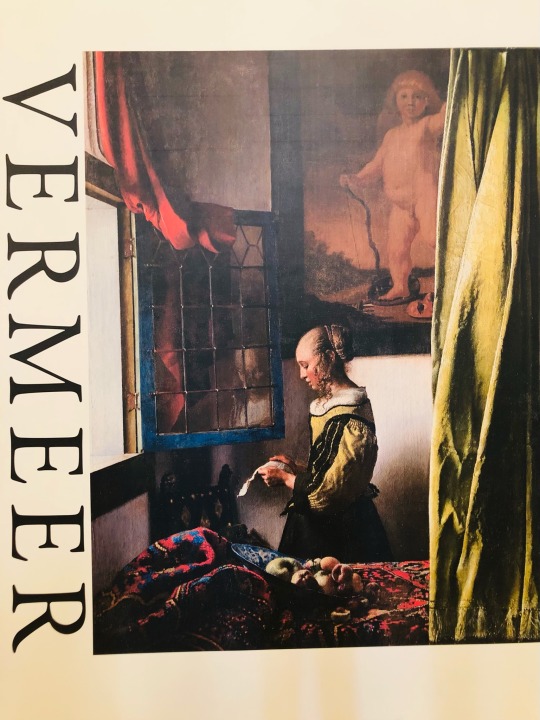
大阪市立美術館で催されている『フェルメールと17世紀オランダ絵画展』を鑑賞しに行って参りました。
修復されたフェルメールの「手紙を読む少女」がメインでした。修復後、所蔵しているドレスデン国立古典絵画館を除いては世界初出展で、日本でのフェルメール人気の高さが窺われます。画中画のキューピッド👼が修復前は塗りつぶされていたのをきれいにして見えるようにしたそうです。こちらは修復前と後です(展覧会リーフレットより)👇🏻
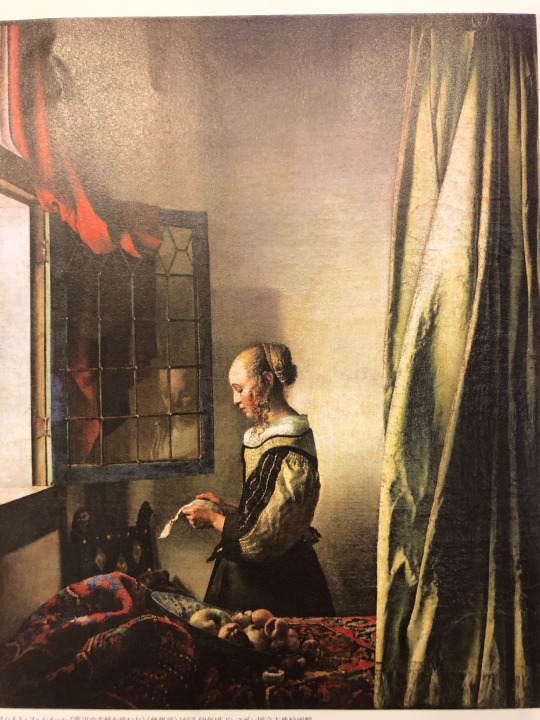

修復して、前より色鮮やかになり、画中画のキューピッドも現れ、キューピッドが弓矢を持って仮面を踏んづけて得意になっている様子がわかります👼 色彩や小物の詳細もクリアになりました。
でも、なぜか前の絵の方がシンプルで好ましく感じられました🤫
#フェルメール#vermeer#johannes vermeer#フェルメールと17世紀オランダ絵画展#大阪市立美術館#Osaka city museum of fine arts#ドレスデン国立古典絵画館
30 notes
·
View notes
Text
Unlock the Magic of Osaka with these Top 9 Kid-Friendly Activities
🌆 Prepare to be amazed by the vibrant city of Osaka! From exploring historic landmarks to enjoying delicious local cuisine, our top 9 kid-friendly activities offer something for everyone. 🤹♀️ Let's discover the magic of Osaka together!
When planning a family trip, Osaka may not be the first destination that comes to mind. However, this vibrant city in Japan offers many attractions and activities that will delight kids and adults alike. Osaka has everything from fascinating aquariums and interactive museums to thrilling theme parks and delectable treats. We will explore 9 things to do in Osaka with kids, ensuring a memorable and…
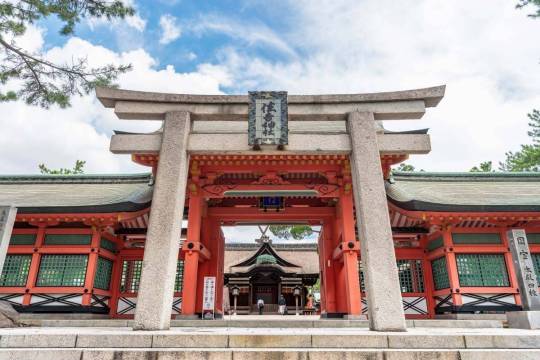
View On WordPress
#activities#attractions#Kaiyukan#Kids Plaza Osaka#lasting memories#Nakanoshima Park#Osaka#Osaka Aquarium#Osaka Castle Park#Osaka City Museum of Fine Arts#rich history#Sumiyoshi Taisha Shrine#Takoyaki Museum#Tempozan Ferris Wheel#Tennoji Zoo#Universal Studios Japan#vibrant culture
0 notes
Text
“The guy in headphones... Kit Rivers?”
“What about him?”
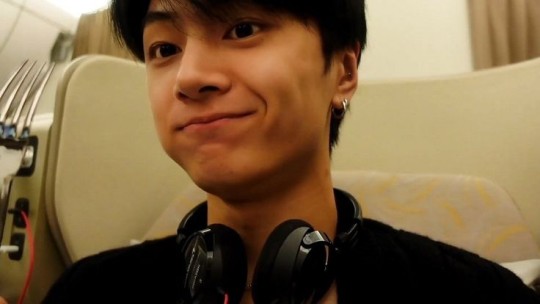
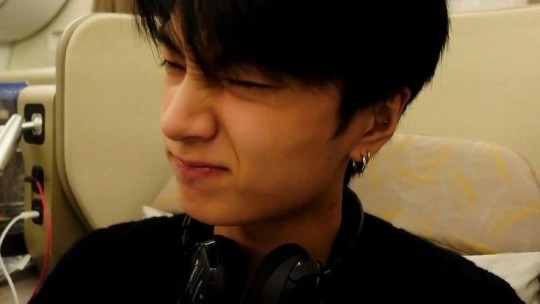
Kit Rivers. Kit. He... might seem like a loner at first, sometimes can be found sitting on a bench somewhere at the quadrungle—a sketch on his lap and headphones over his head, minding his own business. But hey, Kit is nowhere near a loner when he's actually a talker and has made lots of friends with his yapping skills.
“Oh, that guy?”
Kit has been spending his time alone most of his life, due to he can't even count how much they've moved out of a country because of his parents' business. As a kid, he never experienced what other kid would experience, like going to school and out to play with their friends; he homeschooled for at least a good 9 years until he's old enough to tell his parents that he wanted to go to a ‘real’ school. Along the time he homeschooled, he probably moved out for more than 5 times he can't even remember. He spent the longest time being in Osaka and Seattle, which he thought were the most memorable homes for him. So many good memories bloomed and so many things learned, he became a different person ever since.
“Think I've seen him around the Art building!”
Why Fine Arts? Art has fascinated Kit so many times, ever since he's a little. Yes, he's just like any other boys! He's curious, he tried everything that sparks up his curiosities. The day where his parents took him to an art museum, he never knew that it would be so much fun learning about art. Moreover, he thought that arts are just paintings, drawings, when in reality it's so much more. Sculptures, moving pictures, music, every kind of dances, the puddle a kid stepped on after rain, even the museum building itself is art! He would stop and stare at a single art, wondering how can people made such beauty from a scratch—it kind of sparked his interest in art. At first, he would try and draw some abstract doodles which turned out so pretty from his pair of eyes. More and more practice that he started to draw sceneries or human faces. From sketches to paintings, and many other things. Boy even tried potteries at home!
Well, ever since then, art never stopped making the boy curious. Kit wants to explore various of arts he believes there are a lot than more.
“Heard that he's a foreigner...”
Osaka is where Kit's childhood took a turn, he managed to make a few friends somehow by going to play in their residence's playground every afternoon. He would play soccer with other kids, despite the limitations in speaking their language, he found so much fun in it! After times, he started to make a little conversation with them by saying some simple words like “遊ぶ!” or “こんにちは!”, gradually adding more and more words to be a sentence, of course with the help of his parents and the internet. He spent his life long enough in Osaka to be pretty fluent in Japanese, before finally moving somewhere else. It was weird for him... a bit... sad? Since he's used to moving out peacefully—well, he had no friends back then, but he made so many friends in Japan he probably won't get to see again.
He moved away to Korea only for a year to finish out junior high in an actual school and then spent the rest of his high school periods in Seattle, his hometown, a city where he was born. In Seattle, he learned how to properly be friends with people and it has gotten easy over time. He has met a bunch of different people that he never knew existed when he was still a kid with no friends, little Kit must've been very proud.
Finishing high school, he decided to continue his study and living a slow life back in Korea, at Walker International Institute.
0 notes
Text
Ayano Sudo (14th October 1986–) was a Japanese contemporary artist and photographer known for her disguised self- portraits, and photographic works of various kinds.
She graduated from Kyoto City University of Arts and Music with M.A. in 2011.
Profiles
She was born in Osaka pref., Japan in 1986, and spent her middle and high school days in Ashiya city, Hyogo pref., Osaka’s neighboring city with population of more or less 100,000.
She graduated from Akashi Prefectural High School art class in 2005.
In 2009 she went to France to study painting and conceptual art in the exchange student program at Ecole des Beaux-Arts (School of Fine Arts), Paris.
After the study in France, she came back to Japan, and finished the conceptual design course to graduate from Kyoto City University of Art and Music with M.A. in 2011.
At present she lives in Tokyo.
She captures the desire for transformation and ideal images that transcend the gender of the subject in photographs, and presents flat works that appear to be between the color manuscripts of shojo manga (少女漫画) or girls’ comics ( Japanese comics) and photographs. One of the features of the work is that the actual work is printed on photographic paper with its own texture, decorated with rhinestones and glitter, etc., thus making her finished works uniquely glitter under lights.
While in Kyoto City Art University, she was awarded Yasumasa Morimura (森村泰昌, a Japanese appropriation artist)Award in MIO Photo Encouragement Award 2010 in Osaka, Japan.
Since then, she energetically presented her works overseas and held her first solo exhibition at 1839 Modern Art Gallery (1839當代藝廊) in Taipei, Taiwan in October of the same year.
2014, she received the Grand Prize of Canon New Cosmos of Photography Contest (写真新世紀Shashin Shinseiki; a photo contest sponsored by Canon Company, one of the two big photo contests in Japan open public for young future photographers)for the series “幻想(Illusion) Gespenster” featuring herself dressed to missing girls who had really existed. A collection of works with the same title has been published by HOLOHOLO BOOKS in France.
As an artist she has energetically been working on exhibiting her works in various exhibitions and art fairs in Japan and overseas. Also, her varieties of photographic works have been appeared in books and magazines in Japanese and overseas markets as well.
Her works are stored in the George Eastman House International Museum of Photography, New York, USA and the Tokyo Photographic Art Museum (東京都写真美術館, Tokyo-to Shashin Bijutsukan ), Tokyo.
Major solo exhibitions include “Omokage (面影)-Autoscopy” (at Hillside Forum, Tokyo, 2015) and “Ayano Sudo Photo Exhibition Anima / Animus -featuring to introduce Kuniyoshi Kaneko’s Room-” (at Ginza Mitsukoshi 7th Floor Gallery, Tokyo, 2018).
Major group exhibitions include “ I know something about love; About Love Asian Contemporary” (at Tokyo Photographic Art Museum (TOP), 2018), “Photo City Exhibition” (21_21 DESIGN SIGHT, Tokyo City Photographic Exhibition held at TOP, Tokyo, Japan, 2018), “Internet of (No) Thing: Ubiquitous Networking and Artistic Intervention” (at Jogjakarta National Museum, 2018), “SELF / OTHERS”, a dual photo exhibition, (at Canon Gallery S, Tokyo, 2018), etc.
Her main works include “Metamorphose” (2011-), which depicts herself and her friends disguised as an ideal figure regardless of gender, and “Gespenster (幻影、illusion)”, a self-portrait taken as a real missing girl. 2013-14), “Omokage(面影), Autoscopy” (2015) with the motif of such phenomenon as oneselves looking like totally different persons (2015), and among others .
Since 2020, Ayano Sudo has released the art magazine “The peppermint magazine (薄荷) ”, which is created by collaborating with other artists in each issue.
Episodes behind the works
■ In an interview, Sudo told that she finds beauty in beings that sway in all boundaries born in society, such as gender, generation, and races, and also does she find beauty in danger that even life and death are sometimes vague, and Sudo shoots a series of works that do not exist in this world. She says that the feeling of strangeness that she feels in reality is regarded as an " uncanny valley " and she has a desire to overcome it .
■ One of Sudo’s distinctive works is a work that uses a self-portrait technique. Sudo, who strongly believed that she had been a boy since the childhood, and got dressed like a boy. However, when he became a junior high school student, he began to wear Lolita fashion, which was popular among young girls at the time. One of the reasons for this was her strong desire that she wanted to be liked by the admirable ideal senior boy student she had met in her school.
Due to this discomfort with gender from an early age, Sudo’s desire to transform has sprung up, and she has taken a self-portrait in a costume and made it into a work. Sudo says that the series of early works (2011, 2013, 2018) was an act of searching for her own sexual identity, she told in the interview.
In her subsequent productions, Illusion or Gespenster ((幻影)、2013-2014) and MY POSTMORTEM (2018), Sudo pursues the relationship between her body and her identity.
“Illusion(幻影)/Gespenster”
“Illusion” (2013-2014) is a self-portrait book of photography created in her twenties from her experience to come across with a notice put on the wall of a railroad station about missing girls whose whereabout unknown for more than twenty years and that’s why and how she began to get dressed like the girls on the poster.
It consists of 21 self-portraits and a few snapshots. Sudo says that, with respect to the series of this work, she couldn’t think of anything else but a self-portrait which could be realized by superimposing the emotions of herself over the emotion of the missing girls that those girls might have at that time.
The production process begins, at first, with making a list of missing girls
and doing in-depth research of every each of the girls’ profiles. Then, she searches for second-hand apparel shops to find similar clothes the girls in the poster wore at the time of missing, and then shoots in the place nearby her house.
When the print is completed, the finished printing paper further is sprinkled
with glitter like lame, and other glittering objects.
She feels an unspeakable sense of fear toward the girls who have gone to a mysterious world, and at the same time, another thought struck her. That is, they may now live in a land they don’t know, or they may have become corpses somewhere they don’t know. However, the girls on the list will be separated from the timeline of the world when they disappeared, will not grow old, and will remain intact for ever.
Sudo has a longing and strong consciousness for “being a girl” in her body and spirit, which is moving away from the girl every moment, and feels a certain kind of “sacredness” in them, and their existence again. With the above event in mind, she began trying to confirm the missing girls’ existence once again and present it in front of people .
In an interview with the New York Times , Sudo said the title of the photobook Gespenster, meaning illusion or ghost in German, was inspired by the novel “Sasameyuki.” or “Makioka Sisters” written by Junichiro Tanizaki, a famous Japanese novelist.
■ “Teriha no Ibara/照葉野茨 ( a memorial rose)”
“Teriha no ibara” is a new series of her self-portrait photographic work, the motif of which came from “Makioka sisters” appearing in the novel “Sasame Yuki/細雪 (Light snow falls)”, one of Junichiro Tanizaki’s masterpieces.
In the series of the work, photos of the house of Ashiya (an old house resided by Saika Tomita, a well-known Japanese poet) and Tanizaki’s beloved furniture also are included. Also, she appears wearing her grand-mother’s Kimono and various accessories.
Sudo’s grand-mother was a traditional Japanese teahouse owner succeeding the business in 1945 from her father, a founder of the teahouse under the name of Ogawaya founded in 1910.
She reopened the teahouse together with her mother which was destroyed by an air bombing in the last war to become officially the owner of the teahouse in 1945, and opened a geisha house of Ogawaya at Shinmachi, Osaka.
Since 1950’s, the geisha house had been made use of by many Kansai celebrities for entertaining their guests, such as well-known Rakugo tellers like Beicho Ktasura and Kobeicho Katsura, famous comedians Kon Omura and Itoshi &Koishi Yumeji, and Kabuki players, such as Ganjiro Nakamura, Tojuro Sakata, etc.
This Geisha house now is deemed the last and only traditional house available in Semba and Shinmachi districts, Osaka.
Ayano Sudo has made her own experiences vitalized in creating her original artistic and photographic works, learning from the Tanaizaki’s novel “Makioka Sisters”, and getting motif from the women of modern time, i.e. the women of the time when Hanshin Modernism was born and grown in Osaka and Kobe areas in Taisho and early Showa Eras.
She has always been making which ever happens to her be the subjects for her own photography.
1 note
·
View note
Text
Tom Everhart: The Artist Behind the Peanuts Legacy
When one hears the name "Charles Schulz," the immediate association is often with the iconic comic strip "Peanuts." But there's another name that is inextricably linked with the legacy of this beloved cartoonist: Tom Everhart. Born on May 21, 1952, in Washington, D.C., Everhart's journey into the world of art and Schulz's universe of Peanuts characters is a tale of talent, friendship, and a deep sense of purpose.
Everhart's formal art education began at the Yale University of Art and Architecture in 1970. After a brief stint at St. Mary's College, he returned to Yale to complete his graduate studies in 1976. Post-graduate studies at the Musee de l'Orangerie in Paris further enriched his artistic sensibilities. But it was his encounter with Schulz's line art style that would change the course of his career.
In 1980, Everhart was introduced to Schulz at his studios in Santa Rosa, California. Despite having no formal education in cartooning, Everhart was tasked with creating Peanuts renderings for Schulz's studios. To prepare, he magnified some of Schulz's strips on a twenty-five-foot wall in his studio, removing the perimeter lines of the cartoon box to focus solely on Schulz's pen stroke. Impressed with Everhart's ability to reproduce his line art, Schulz was eager to collaborate.
Over the years, Everhart created a series of Schulz-inspired paintings, replacing his previous work in 1988. The inspiration for this shift came during a challenging time for Everhart, as he underwent several operations for stage 4 colon/liver cancer. Surrounded by flowers, art books, and stacks of Peanuts comic strips sent by Schulz, Everhart found solace and inspiration in the light streaming into his hospital room.
In 1990, Everhart's Schulz-related work was exhibited at the Louvre in Paris, marking a significant milestone in his career. Subsequent exhibitions in cities like Los Angeles, Montreal, Tokyo, Rome, and New York brought his Schulz-inspired paintings to a global audience. Everhart's works, often derived from Schulz's Peanuts comic strip, are a testament to his deep connection to Schulz's characters and the messages they convey.
In 1991, a legal agreement between Everhart, United Media, and Schulz allowed Everhart to use Schulz's Peanuts characters in his art for "the term of his life." This partnership paved the way for Everhart's continued exploration of Schulz's universe through his unique artistic lens.
In 2000, Everhart's first solo museum show was launched at the Suntory Museum of Art in Tokyo and Osaka, Japan. Following Schulz's passing in 2000, Everhart's connection to the Peanuts legacy took on even greater significance. His ongoing trips between French Polynesia and Venice, California, influenced his work, evident in the luminous color palette that defines many of his paintings.
Everhart's contributions to the Peanuts legacy have been celebrated in various exhibitions and publications, including a solo exhibition at the Charles M. Schulz Museum in Santa Rosa, California. His dedication to the artwork of Charles Schulz and the collaborative relationship they shared continues to inspire audiences worldwide.
Today, Everhart resides in Venice, California, with his wife Jennifer, who serves as the director of their studio. He remains the only fine artist authorized by both Schulz and Iconix to use subject matter from Schulz's Peanuts strip in his fine art. Through his lectures and artistic endeavors, Everhart ensures that Schulz's characters and messages remain an enduring part of our cultural landscape. If you are interested in Tom Everhart’s art for sale or exhibition in Aspen, shop at the leading artist gallery in Aspen,Royal Street Fine Art, or call 970-920-3371.
0 notes
Text
耿晧剛 展歷
Keng Hao-Kang Exhibitions
耿晧剛1969年生於台灣,自東海大學美術系畢業後,赴義大利米蘭布雷拉國立美術學院(Accademia di belle arti di Brera)就讀,跟隨Diego Esposito教授主修繪畫與裝置藝術,開啟了觀念藝術的思考。返台後曾於時尚流行品牌Hugo Boss任職數年,並於2008年起任教於銘傳大學商業設計系與東海大學美術學系,獨特的成長背景與留義經驗,讓耿晧剛成為不自限的創作者,不斷地翻新創作樣貌,從生活的體驗與敏銳的感知出發,反映於多元的作品中。耿晧剛作品曾展出於大阪藝術博覽會、台北當代藝術博覽會,並且為國美館、高雄市立美術館、台南市美術館及其他私人收藏單位所典藏。耿晧剛現生活與創作於台北。
主要學歷
2002 米蘭布雷拉國立美術學院碩士 義大利
1993 東海大學美術學系 台灣
主要個展
2024 「在那之後,」,臻品藝術中心,台中,台灣
2019 「快樂進行曲-耿晧剛創作展」,銘傳大學商設藝廊,桃園,台灣
2017 「第三自然」,月臨畫廊,台中,台灣
2016 「長乘以寬 耿晧剛作品展1998-2015」,大趨勢畫廊,台北,台灣
2016 「三月・小甜心-耿晧剛個展」,恆畫廊,台北,台灣
2015 「清晨・奧爾維耶托-耿晧剛個展」,小畫廊,高雄,台灣
2015 「遠在咫尺」,臻品藝術中心,台中,台灣
2013 「差異之間 耿晧剛個展」,新苑藝術,台北,台灣
2013 「布里歐 日常」,彌留實驗藝廊,台中,台灣
2012 「未來‧進行式 耿晧剛個展」,貝瑪畫廊,台北,台灣
2011 「耿晧剛 近作與繪畫展」,新苑藝術,台北,台灣
2011 「雙重衝擊」,新苑藝術,新北市板橋區,台灣
2010 「Why so Serious? 2010」,雲林科技大學藝文中心,雲林,台灣
2009 「Why so Serious?」,中國科技大學藝文中心,台北,台灣
1999 「一幅畫」,代比流士藏書畫廊,米蘭,義大利
1998 「納歐詩」,布雷拉第四教室,米蘭,義大利
主要聯展
2022 「非常態 亞洲國際美展會員展」,大新美術館 台南,台灣
2021 「2021台北國際藝術博覽會」,形而上畫廊 台北,台灣
2021 「藝流系譜學院之道」大墩文化中心,台中,台灣
2021 「第29屆亞洲國際美展」,九州,日本
2021 「如果有一天」形而上畫廊,台北,台灣
2020 「禽獸不如─ 2020台灣美術雙年展」,國立臺灣美術館,台中,台灣
2020 「老耿與他的藝術家朋友們」,臻品藝術中心,台中,台灣
2019 「有機體 臺藝東海-創作交流展」,國立臺灣藝術大學,台北,台灣
2018 「抽象九人聯展」,耘非凡美術館,台南,台灣
2018 「春花望露」,形而上畫廊,台北,台灣
2018 「以色為名」,東海大學藝術中心,台中,台灣
2017 「第十二夜」,形而上畫廊,台北,台灣
2016 「當代台灣 抽象精選展」,耘非凡美術館,台南,台灣
2016 「在天空仰望玫瑰」,形而上畫廊,台北,台灣
2016 「內在幻覺與現實符號」,東海大學藝術中心,台中,台灣
2015 「現代台灣的藝象」,銀座幸伸藝廊,東京,日本
2014 「伊通26週年慶‧一本初衷手稿展」,伊通生活空間,台北,台灣
2014 「萬花嬉春」,臻品藝術中心,台中,台灣
2013 「高雄藝術博覽會」,新苑藝術,高雄,台灣
2013 「天秤座」,臻品藝術中心,台中,台灣
2013 「加減乘除」,形而上畫廊,台北,台灣
2013 「台北國際當代藝術博覽會」,新苑藝術,台北,台灣
2013 「瞬間永恆,抽象繪畫的可能性」,臻品藝術中心,台中,台灣
2013 「台南藝術博覽會」新苑藝術,台南,台灣
2013 「從零開始,無限大的小」,形而上畫廊,台北,台灣
2012 「大阪藝博會」,新苑藝術,大阪,日本
2012 「台中畫廊藝術博覽會」,新苑藝術,台中,台灣
2012 「台北國際當代藝術博覽會」,新苑藝術,台北,台灣
2012 「府城藝術博覽會」新苑藝術,台南,台灣
2011 「台北攝影與數位影像藝術博覽會」,新苑藝術,台北,台灣
2011 「大阪藝博會」,新苑藝術,大阪,日本
2011 「台北國際當代藝術博覽會」,新苑藝術,台北,台灣
2011 「台中畫廊藝術博覽會」,新苑藝術,台中,台灣
2011 「「異」「想」軌跡 」,新苑藝術,台北,台灣
2010 「在世代之間」,蓽蘿藝術活動中心,台北,台灣
2010 「寄寓&溯源」,藝星藝術中心,台北,台灣
2008 「六人聯展」,天使美術館,台北,台灣
2006 「第19屆亞洲國際美展」,新加坡
2001 「華」阿投泰卡畫廊,米蘭,義大利
2001 「現代藝術的符號與象徵性」,現代展館,科摩,義大利
2000 「弩各」,皇室舊醫院,扣投扭,義大利
1998 「視覺的波浪」,救世特區,米蘭,義大利
1998 「國際池」,普其艾蕾放特空間,奧斯納構,米蘭,義大利
1997 「沙龍特展」,二十號畫廊,米蘭,義大利
1997 「與對角線的對話」,雷切市,義大利
典藏紀錄
國立台灣美術館
台中市立美術館
高雄市立美術館
台南市美術館
國內外私人收藏
KENG HAO KANG
Keng Hao-Kang was born in 1969 in Taiwan. After graduated from Department of Fine Arts in Tunghai University, he studied under Professor Diego Esposito at Accademia di belle arti di Brera, Italy, majoring in painting and installation art. The life and the study in Italy inspired his thoughts and development toward conceptual art. Keng worked for Hugo Boss afterward, and has been teaching in Ming Chuan University and Tunghai University since 2008. The unique background of growth and study along with the work experience have influenced his diverse creative styles. Keng’s work has been showcased widely at Art Osaka, Young Art Taipei and collected by National Taiwan Museum of Fine Art, Kaohsiung Museum of Fine Art, and other important private collections. Keng currently lives and works in Taipei.
Education
2002 Accademia di Belle Arti di Brera, Milan, Italy
1993 Tunghai University, Dep. Fine Arts, Taichung, Taiwan
Selected Solo Exhibitions
2024 “after that, ” Galerie Pierre, Taichung , Taiwan
2019“Nothing but happy” MCU Department of Commercial Design Gallery, Taoyuan , Taiwan
2017 “The Third Nature-Daily Pattern” Moon Gallery, Taichung , Taiwan
2016 “Geometric Composition 1998-2015” Main Trend Gallery, Taipei , Taiwan
2016 “Pinup・March” Galleria H., Taipei, Taiwan
2015 “Orvieto Morning” Show Gallery, Kaohsiung, Taiwan
2015 “So Far So Close” Galerie Pierre, Taichung , Taiwan
2013 “The Difference Between” Galerie Grand Siècle, Taipei , Taiwan
2013 “Brioche-Daily” Me:Liu experimental Gallery, Taichung, Taiwan
2012 “Future-Progress KENG HAO KANG” Pema Lamo Gallery, Taipei, Taiwan
2011 “KENG HAO KANG - ” Galerie Grand Siècle, Taipei , Taiwan
2011 “Double Impact - ” Galerie Grand Siècle, Banqiao Dist.,New Taipei City , Taiwan
2010 “ Why so Serious? 2010 ” Yutech ,Art Center , Yunlin , Taiwan
2009 “ Why so Serious? ” CUTE , Art Center , Taipei ,Taiwan
1999 “Un Dipinto” Derbylius Libreria Gallery, Milan, Italy
1998 “NAOS” n.4 Aula of Brera, Milan, Italy
Selected Group Exhibitions
2022 “Abnormal AIAE by Taiwan Committee Members”Da Xin Art Gallery,Tainan,Taiwan
2021 “Art Taipei 2021” Metaphysical Art Gallery, Taipei, Taiwan
2021 “The 29th Asian International Art Exhibition “, Japan
2021 “One day in the future” Metaphysical Art Gallery, Taipei, Taiwan
2020 “Subzoology: 2020 Taiwan Biennial” National Taiwan Museum of Fine Arts,Taichung , Taiwan
2020 “Mr.Keng and his Artist Friends” Galerie Pierre, Taichung , Taiwan
2019 “ORGANISM” National Taiwan University of Art, Taipei, Taiwan
2018 “Minimalism-Cold Abstraction in Taiwan” Remarkable Cultivation Art Museum, Tainan , Taiwan
2018 “Dream Blossom” Metaphysical Art Gallery, Taipei, Taiwan
2018 “The name of Color” Tunghai University Art Center, Taichung, Taiwan
2017 “What You Will” Metaphysical Art Gallery, Taipei, Taiwan
2016 “Contemporary Taiwan” Remarkable Cultivation Art Museum, Tainan , Taiwan
2016 “Look up Rose from the Sky” Metaphysical Art Gallery, Taipei, Taiwan
2016 “Internal hallucinations & Reality symbols” Tunghai University Art Center, Taichung, Taiwan
2015 “Art Contemporaneity Taiwan” Ginza Kousin Gallery, Tokyo , Japan
2014 “Celebrating 26 years of IT park” IT ArtHouse,Taipei , Taiwan
2014 “Bloom with Multicolored” Galerie Pierre, Taichung , Taiwan
2013 “Art Kaohsiung ” Galerie Grand Siècle, Kaohsiung , Taiwan
2013 “Libra” Galerie Pierre, Taichung , Taiwan
2013 “+-x÷” Metaphysical Art Gallery, Taipei, Tawan
2013 “Young Art Taipei” Galerie Grand Siècle, Taipei , Taiwan
2013 “Moments of Eternity – the possibilities of abstract painting” Galerie Pierre, Taichung , Taiwan
2013 “Art Tainan ” Galerie Grand Siècle, Tainan , Taiwan
2013 “Start from Zero. small with infinitely large” Metaphysical Art Gallery, Taipei, Tawan
2012 “Art Osaka” Galerie Grand Siècle, Osaka , Japan
2012 “T-Art in Taichung ” Galerie Grand Siècle, Taichung , Taiwan
2012 “Young Art Taipei” Galerie Grand Siècle, Taipei , Taiwan
2012 “Art Tainan ” Galerie Grand Siècle, Tainan , Taiwan
2011 “Photo Taipei 2011” Galerie Grand Siècle, Taipei , Taiwan
2011 “Art Osaka” Galerie Grand Siècle, Osaka , Japan
2011 “Young Art Taipei” Galerie Grand Siècle, Taipei , Taiwan
2011 “T-Art in Taichung ” Galerie Grand Siècle, Taichung , Taiwan
2011 “Traces of Wandering Thoughts ” Galerie Grand Siècle, Taipei , Taiwan
2010 “Between the Generations ”Artpillar Gallery, Taipei , Taiwan
2010 “Dwelling Abroad . Dwelling on Home” Star Crystal Gallery, Taipei
2008 “Six 6” Angel Art Gallery, Taipei , Taiwan
2006 “ The 19th Asian International Art Exhibition“, Singapore
2001 “HUA” Gallery Artoteca, Milan, Italy
2001 “Simboli e Simbolismi nell’arte contemporanea: En Blanc et Noir” Space Shed Como, Italy
2000 “N.U.N.C.” Vecchio Ospedale Soave, Italy
1998 “Visual Wave” Space Societa Umaitaria, Milan, Italy
1998 “Water International” Spazio Pucinoelefante, Osnago,Milan, Italy
1997 “Salon Primo” Studio Venticinque, Milan, Italy
1997 “Linguaggio in Diagonale” Lecce Comune, Italy
Collection
National Taiwan Museum of Fine Arts, Taichung
Taichung Museum of Art
Kaohsiung Museum of Fine Arts, Kaohsiung
Tainan Art Museum,Tainan
Domestic and foreign private collection
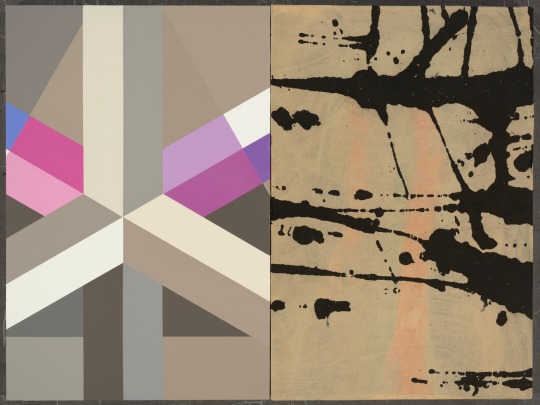

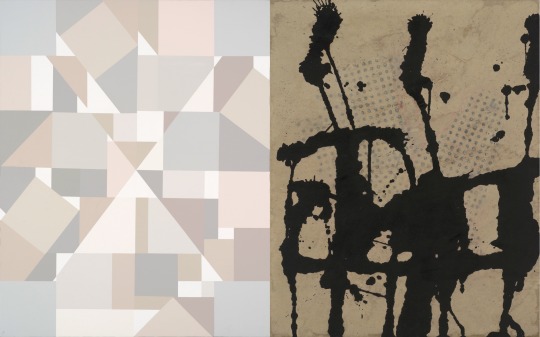
0 notes
Text
Artist Research - Nobuhiro Nakanishi (Layering)
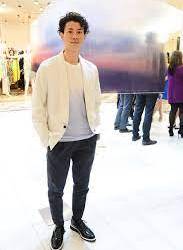
About - Nobuhiro is a Japanese artist, born in Fukuoka, Japan 1976. He studied sculpture at Tokyo Zokei University gaining Bachelor of Fine Arts, and Kyoto City of University of Art, of which he received an MA in 2002 when graduating. There is no more information on Nakanishi’s life, so I will mostly be talking about his work. He mostly works to create immersive installation experiences which attempt to capture the passage of time by using photography, sculpture and prolonged observation.
Nakanishi’s work typically involves presenting humans or objects in 3D interpretations using various media, such as wood, stone, clay and metal. He uses his art to express his thoughts around the antithetical ideas of existence and absence, the material and the non-material, the visible and the invisible, sense and conceptual territories such as consciousness, thoughts, memories and time, inviting the viewer into a mysterious and engaging experience.
Nakanishi’s installations render the abstracts and the ephemeral through serialised images on plexiglass panels, which he uses to portray the topics of absence, spatial-temporal perception and sensory experiences. Their work is typically produced as a series, by combining individual images together to produce an absract experience of the depicted subject, such as a sunset or the physical encounter with nature.
Nakanishi’s ‘Layered Drawings’ are created with photographs of environments that are taken over a long period of time and then chronologically arranged on acrylic panels to recreate temporal progressions, with small variations within each frame. This allows the art to be perceived where time has ‘no shape or boundary’, letting the experience differ from person to person. Within the gaps of the images, viewers can use their personal experience to add their perspective to the artists documentation, since each image has captured a different moment in the places history.
Nakanishi’s ‘Stripe Drawings’ depict landscapes in which distances and physical boundaries dissolve, such as a landscape covered in fog. For example; made from countless fine pencil lines produced at set intervals, the lines and spaces create shapes that appear to encroach on one another, yet coexist on the same plane - Stripe Drawing – Eclipse 3 (2013). Nakanishi implies that when the public track said lines, recreates the ‘physical experience’ of the artists free-hand drawing process, thus making the connection between the viewers and the artwork.
Nobuhiro Nakanishi has had a good amount of exhibitions, solo and group. Solo exhibitions include Gunma Museum of Art (2016); Yumiko Chiba Associates, Tokyo (2015); Kashya Hilderbrand, London (2014); Joyce Gallery, Beijing (2013); Aomori Contemporary Art Centre (2011); Gallery Nomart, Osaka (2010); and Osaka Contemporary Art Center (2006). Group exhibitions include Asia Culture Center, Gwangju (2015); Art Stage Singapore (2014); Toyota Municipal Museum of Art, Aichi (2012); The Museum of Modern Art, Wakayama (2011); 7th International Ink Painting Biennial, Shenzhen (2010); Hangaram Arts Center Museum, Seoul (2009); and Mori Art Museum, Tokyo (2007).

Quote - “We are all subject to the passing of time, yet each of us feels and perceives it in our own way,” Nakaniski says on his website. “Time itself has no shape or boundary and cannot be fixed or grasped. When we look at the photographs in these sculptures, we attempt to fill in the gaps between the individual images. We draw from our physical experiences to fill in missing time and space, both ephemeral and vague. In this series, I attempt to depict time and space as sensations shared by both viewer and artist.”
Thoughts - I’ve chosen to research Nobuhiro Nakanishi as I find his use of layer highly inspirational, I’d like to create something similar with my own work. I love the build up of colour, depth and dimension which are qualities rife within his art, creating visually intricate pieces that the viewer can dissect at each individual layer. I’d like to explore with his method of images on see through 2D material, to find how I too can create a scene that bring the viewer closer.
0 notes
Text
Artist Research - Nobuhiro Nakanishi

About - Nobuhiro is a Japanese artist, born in Fukuoka, Japan 1976. He studied sculpture at Tokyo Zokei University gaining Bachelor of Fine Arts, and Kyoto City of University of Art, of which he received an MA in 2002 when graduating. There is no more information on Nakanishi’s life, so I will mostly be talking about his work. He mostly works to create immersive installation experiences which attempt to capture the passage of time by using photography, sculpture and prolonged observation.
Nakanishi’s work typically involves presenting humans or objects in 3D interpretations using various media, such as wood, stone, clay and metal. He uses his art to express his thoughts around the antithetical ideas of existence and absence, the material and the non-material, the visible and the invisible, sense and conceptual territories such as consciousness, thoughts, memories and time, inviting the viewer into a mysterious and engaging experience.
Nakanishi’s installations render the abstracts and the ephemeral through serialised images on plexiglass panels, which he uses to portray the topics of absence, spatial-temporal perception and sensory experiences. Their work is typically produced as a series, by combining individual images together to produce an absract experience of the depicted subject, such as a sunset or the physical encounter with nature.
Nakanishi’s ‘Layered Drawings’ are created with photographs of environments that are taken over a long period of time and then chronologically arranged on acrylic panels to recreate temporal progressions, with small variations within each frame. This allows the art to be perceived where time has ‘no shape or boundary’, letting the experience differ from person to person. Within the gaps of the images, viewers can use their personal experience to add their perspective to the artists documentation, since each image has captured a different moment in the places history.
Nakanishi’s ‘Stripe Drawings’ depict landscapes in which distances and physical boundaries dissolve, such as a landscape covered in fog. For example; made from countless fine pencil lines produced at set intervals, the lines and spaces create shapes that appear to encroach on one another, yet coexist on the same plane - Stripe Drawing – Eclipse 3 (2013). Nakanishi implies that when the public track said lines, recreates the ‘physical experience’ of the artists free-hand drawing process, thus making the connection between the viewers and the artwork.
Nobuhiro Nakanishi has had a good amount of exhibitions, solo and group. Solo exhibitions include Gunma Museum of Art (2016); Yumiko Chiba Associates, Tokyo (2015); Kashya Hilderbrand, London (2014); Joyce Gallery, Beijing (2013); Aomori Contemporary Art Centre (2011); Gallery Nomart, Osaka (2010); and Osaka Contemporary Art Center (2006). Group exhibitions include Asia Culture Center, Gwangju (2015); Art Stage Singapore (2014); Toyota Municipal Museum of Art, Aichi (2012); The Museum of Modern Art, Wakayama (2011); 7th International Ink Painting Biennial, Shenzhen (2010); Hangaram Arts Center Museum, Seoul (2009); and Mori Art Museum, Tokyo (2007).
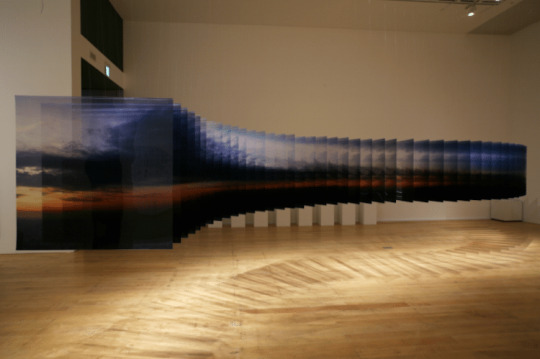
“We are all subject to the passing of time, yet each of us feels and perceives it in our own way,” Nakaniski says on his website. “Time itself has no shape or boundary and cannot be fixed or grasped. When we look at the photographs in these sculptures, we attempt to fill in the gaps between the individual images. We draw from our physical experiences to fill in missing time and space, both ephemeral and vague. In this series, I attempt to depict time and space as sensations shared by both viewer and artist.”
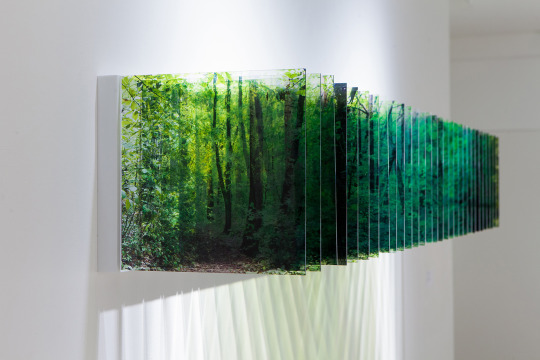
Thoughts - I’ve chosen to research Nobuhiro Nakanishi as I find his use of layer highly inspirational, I’d like to create something similar with my own work. I love the build up of colour, depth and dimension which are qualities rife within his art, creating visually intricate pieces that the viewer can dissect at each individual layer. I’d like to explore with his method of images on see through 2D material, to find how I too can create a scene that bring the viewer closer.
0 notes
Text
Now Open in New York—Dan Flavin at Park & 75
Gagosian Presents Works by Dan Flavin in New York

NEW YORK, November 12, 2021—Gagosian is pleased to present two sculptures by Dan Flavin: untitled (to Barnett Newman) two (1971), and untitled (to Sabine and Holger) (1966–71). The dates of the exhibition overlap with those of exhibitions of work by John Chamberlain at 522 West 21st Street and Donald Judd at 555 West 24th Street.
Flavin used widely available fluorescent tube lights to radically alter and rearticulate the space shared by work and viewer while maintaining formal and material consistency from one project to the next. In doing so, he also circumvented the limitations imposed by handwrought armatures, as well as by pedestals and other conventional means of object display. In this way, Flavin—alongside his contemporaries including Carl Andre and Donald Judd—played a key role in directing the course of art making in the 1960s and 1970s toward the eradication of the artist’s hand.
In untitled (to Sabine and Holger), Flavin transforms the viewer’s experience through what artist Mel Bochner has characterized as “an acute awareness of the phenomenology of rooms.” The work both defines the intersection of the walls and masks the darkness of the receding corner. “I knew the actual space of a room could be broken down and played with,” Flavin explained, “by planting illusions of real light, electric light, at crucial junctures in the room’s composition.”
One of four sculptures with the same subtitular dedication, untitled (for Barnett Newman) two was produced for Flavin’s solo exhibition at Dwan Gallery, New York, in 1971. The sculptures were intended as memorials to the painter, their color combinations referring to Newman’s four-painting series Who’s Afraid of Red, Yellow and Blue (1966–70). As with untitled (to Sabine and Holger), the work’s autonomous formal qualities are impossible to consider independently of the environment with which they interact. Saturating the exhibition space with ambient colored light, untitled (for Barnett Newman) two effectively transforms our perception of the room’s internal dynamics without altering its physical structure. Seen together, the two works also underscore Flavin’s interest in serial configurations.
Dan Flavin was born in New York City in 1933 and died in Riverhead, New York, in 1996. Collections include the Museum of Modern Art, New York; Solomon R. Guggenheim Museum, New York; Whitney Museum of American Art, New York; Hirshhorn Museum and Sculpture Garden, Washington, DC; Museum of Contemporary Art, Los Angeles; San Francisco Museum of Modern Art; Tate, London; Museo Nacional Centro de Arte Reina Sofía, Madrid; Stedelijk Museum voor Actuele Kunst, Ghent, Belgium; Royal Museums of Fine Arts of Belgium, Brussels; Musée d’art contemporain de Lyon, France; Kunstmuseum Basel; Ho-Am Art Museum, Seoul; Museum of Contemporary Art Tokyo; and National Museum of Art, Osaka, Japan. Major retrospectives have been organized by the National Gallery of Canada, Ottawa (1969); St. Louis Art Museum (1973); Kunsthalle Basel (1975); Museum Boijmans Van Beuningen, Rotterdam, Netherlands (1975); Museum of Contemporary Art, Los Angeles (1989); Solomon R. Guggenheim Museum, New York (1992); Deutsche Guggenheim, Berlin (1999); Dia Art Foundation in association with National Gallery of Art, Washington, DC (traveled, 2004–07); and Museum Moderner Kunst Stiftung Ludwig Wien, Vienna (2012, traveled to Kunstmuseum St. Gallen, Switzerland, 2013). Long-term site-specific installations include Dia:Beacon, NY; Chinati Foundation, Marfa, TX; Menil Collection, Houston; Staatliche Kunsthalle Baden-Baden, Germany; and Kunstmuseum Basel. The Dan Flavin Art Institute was established in 1983 in Bridgehampton, NY.
DAN FLAVIN
Opening reception: Tuesday, November 9, 4–7pm
November 9–December 23, 2021
Park & 75, 821 Park Avenue, New York
_____
Installation view, Dan Flavin, Gagosian, Park & 75, New York, November 9–December 23, 2021. Artwork © 2021 Stephen Flavin/Artists Rights Society (ARS), New York. Photo: Rob McKeever
27 notes
·
View notes
Photo

Shima Seien, Untitled, 1918, Osaka City Museum of Fine Arts (on view at the National Museum of Modern Art, Tokyo through April 18, 2021)
90 notes
·
View notes
Photo

Late Autumn
Uemura Shōen
1943
Color on Silk
Osaka City Museum of Fine Arts
246 notes
·
View notes
Text

Hara Zaisei 原在正(1778-1810)—
Painting of sleeping cat 「睡猫図」すいびょうず.
Osaka City Museum of Fine Arts
1K notes
·
View notes
Text
Best places in Japan that is worth to visit
Japan has places that are worth to visit specially, when you only have a limited time to be there. Not only the places that makes it worth it, the kindness of Japanese people, the cleanliness, the food, and also the culture. Japanese treat everyone with kindness, I’ve read about a tourist that talk’s abut a taxi driver in Japan with a white gloves offer him an umbrella as he arrived in his hotel because it is raining and he do not have one. See? The cleanliness and kindness will really greet you as you arrive there. Japanese food is loved worldwide for example sushi. And now, let us talk about the places that will make your visit in Japan worth it.
Tokyo
The city that represents the colors of Japan is Tokyo. There are endless places to visit in Japan, and exploring everything on a single trip would always be impossible. But, thanks to its anime culture and world class attractions, the famous city of Tokyo still deserves the top spot in your itinerary. And if you are not really pleased by the historical places, the city has a great culinary scene as well! This is definitely among the best places in Japan to visit.
You can spend your night near the Tokyo Tower or you could go shopping in Odaiba. The places in Tokyo that considered as top attractions are Tokyo Disneyland, Tokyo Skytree, they also have Tokyo Disney Sea. Interesting right? And if you want to eat Japanese foods there are many restaurants in Tokyo that serves the best Japanese foods just like in Tapas Molecular Bar, Ise Sueyoshi, Sometarō.
Kyoto
A city of sanctuaries, gardens & palaces! The sacred city of Kyoto is one of the best places to visit in Japan in the spring of all the major destinations in Japan, regardless of whether you're holidaying with your family or your partner. Iconic temples, shrines, palaces, parks, and bamboo forests are a treat for your eyes, and on your first outing, you can't afford to miss them. In Kyoto you can visit Kyoto Imperial Palace, Philosopher’s Walk, Fushimi-Inari Taisha Shrine, Kiyomizu Temple, Explore the Nijo Castle, and also visit the famous Kinkaku-ji. These are the reasons why Kyoto is one of the many best places that you have to visit in Japan.
Nara
Nara is also know the City of Culture. Home to magnificent deer, temples & more! Without including Nara in it, no list of Japan's top attractions could ever be complete. This city, home to many shrines, monasteries, museums, and the famous Nara Park, is where you need to be in order to get to know the famous Japanese culture and traditions. It certainly features on the list of places to visit in Japan that are not to be missed. The top attractions in Nara are Nara Park, Kasuga-taisha, and the Ninja Museum of Igaryu. You could visit the Isuien Garden and befriend the deers at the Nara-koen Park or you could also explore the Nara National Museum.
Mt. Fuji
Of course the most famous Mt. Fuji who has a breathtaking view. Paradise for seekers of adventure! Mt. Fuji, renowned around the world for offering Japan's most enjoyable adventure, is the best place to visit. While the official climbing season starts in July and finishes in September, you can observe the beauty all year round from a distance. It's one of our favorite spots in Japan. Needless to say, it should be on your list for this spot! You could go for skiing, or visit the Arakurayama Sengen Park, and also enjoy the views of Mt. Fuji from the Subashiri 5th Station.
Okinawa
The place in Japan that is known for its good climate and magnificent beaches. The best things to do in Okinawa are to take full advantage of the cultural-rich urban centers of the destination and the green, tropical shores of Asia Pacific. Okinawa offers outdoor adventures for the intrepid soul, culinary wonders for the foodie, fun memories for the globetrotting family, and more, made up of a string of over 160 islands. Discover the centuries-old temples and kingdoms that have shaped the history of Japan over the years, learn the traditional arts and crafts of the destination over riveting performances and hands-on activities, or dive, literally! into the natural bounty of the islands. You can have everything in Okinawa.
Osaka
Osaka is one of the biggest places to go in Japan, with the best shopping arcades, eateries that sell incredible food, and the city's top nightlife hotspots. Believe us, not only will the foodie or party lover in you be pampered, but also the die-hard tourist who loves to witness the wonders of any place he or she visits. These are the most famous places for first timers to visit in Japan! The top attractions in Okinawa are Universal Studios Japan, Osaka Castle, and Dotonbori. To really enjoy the place you can visit the Kaiyukan Aquarium, visit the Hozenji Temple, and go beer tasting and partying at night.
Hakuba
If you love activities that are edventurous then Hakuba is tha place for you. The ultimate wonderland of winter! Situated in the middle of the Japanese Alps, just outside the town of Nagano, Hakuba is a popular winter sports center in the village. The numerous mountain resorts that offer amazing skiing, snowboarding, and hiking experiences make the city a great place to be included in your sightseeing tour of Japan. You can see the top attractions of Hakuba that are Mt. Shirouma, Hakuba Happoone Winter Resort, and the Lake Aoki. And for the thrilling activities that are worth it to do are ski at the Cortina Resort or you could visit Hakuba 47 Winter Sports Park and hike to the Happo Pond.
Naoshima
Also known as the lush green island in Japan. Naoshima, a small island beautifully set in the middle of the Seto Inland Sea, provides a great weekend getaway from Tokyo. There is no lack of museums of art, sculptures and modern architecture that are woven into the island 's numerous attractions. It's best if you plan to stay there overnight just to get enough of the bliss and peace that the place has to offer, since it's a long journey to the island. Naoshima is also known in Japan as one of the best camping destinations. Get ready to witness Tadao Ando's fine work at the Chichu Art Museum or visit Kojin Island for some peace and quiet. And you could see the splendid charm of nature in the Cherry Blossom Labyrinth.
Ueno Park
The park where you could breath for the fresh air. Ueno Park in Tokyo is the place to be if you want to have a short stay in Japan, with an array of different options in one place. Whether you're a history buff or not, because of its authenticity and extraordinary fun vibes, an ancient black market like the one found in Ameya Yokocho will provide you chills down the scene. If you want to discover Japan's cultural and historic history, don't forget to visit Yanaka. You could try Hanami to respect and experience one of the traditions of Japan, or maybe, make a visit at National Museum of Nature and Science, and experience bliss and serenity at Ueno Toshogu Shrine.
Yokohama
The charming and vibrant city oy Yokohama, Japan. It is slightly sad that Yokohama does not attract as many visitors as Tokyo, even though it is located quite close to Tokyo, having so many thrilling adventures and simply fun things to do. This place will certainly impress you more than you'd think, with a charming Minato Mirai waterfront on board, along with one of the largest Chinatown regions. Get ready as it is woven into their culture to have a warm welcome from the locals here. This will sort out your question as to where to visit in Japan for a romantic evening. The top three attractions in Yokohama, Japan are Yokohama Chinatown, Yokohama Red Brick Warehouse, and the Yokohama Hakkeijima Sea Paradise. And to enjoy you could also visit Enoshima island for some bliss, and witness a traditional Japanese garden at Sankeien Garden or maybe you could enjoy a fun outing at Shin-Yokohama Ramen Museum. Yokohama is perfect for dating specially, at night then you can date your special someone at Charcoal Grill Green or at Azamino Ukai-tei, and also at Ippudo.
That was just the ten of the many places in Japan that would make your visit worth it. You do not have to worry for the safety because Japan is known for their low crime rate because Japanese people are disciplined, not only by words but also you can see and experience the discipline that I am saying. Just look at how clean the surrounding are even you are at the most crowded area, you can see the cleanliness. Are you interested now? Try to watch the anime that are made by in Japan, there you can see their culture, the way Japanese people treat each other with kindness, and also in anime they put realistic places there. Like, you could really find the place that are in the anime in reality. Example of this anime is Kimi No Nawa, I chose that example because it is known worldwide. So? Are you also interested in visiting Japan? If no, it’s up to you. There are many places that made Japan worth to visit.
@queenlupitajones

3 notes
·
View notes
Text
IDOLiSH7 4th Anniversary Special Story: Best Wishes...
Chapter 3: Gacchan's Inspection
Chapter 1 | Chapter 2 | Chapter 4 | Chapter 5
Momo: Good work this week~!
Just a little longer, and we'll
have our vacation day!
Yuki: Right. We should go out
together on our next off day.
Momo: Really!? I hope you're not
just saying that, and planning to
sleep through the day anyway.
Yuki: We can go out in the evening.
You know, somewhere... in the
neighborhood.
Momo: It's our long-awaited day
off, so I wanna wake up early and
go to the sea or the mountains! I
wanna do something recreational!
Yuki: You're so energetic...
I'll need five consecutive vacation
days before I'm even mentally prepared
to go to the seaside or mountains.
Yuki: Let's just watch a DVD together.
I can't handle the splatter stuff that
you love, but I did like the film we
watched the other day.
Momo: Liar, you slept through it.
Yuki: I didn't, I swear.
Okazaki's Voice Through Speakers: Good
work today.
Momo & Yuki: .......!?
Momo: What!? Where's Okarin's
voice coming from!?
Yuki: Ah... There's a speaker
fixed to the ceiling.
Momo: Huh!? You're right!
Okazaki's Voice Through Speakers: Can
you hear me?
Momo & Yuki: We can hear you.
Momo: What's up with this?
Okazaki's Voice Through Speakers: That
foreign TV show, "Johnny's Venuses", has
been popular recently, yes?
Momo: Yeah. It's about an all-female
detective agency, where their boss
Johnny gives orders to the Venuses.
Okazaki's Voice Through Speakers: Yes,
that one.
Okazaki's Voice Through Speakers: Our
president said he wanted to try that...
Yuki: Is he an idiot?
Momo: That's the reason he put up speakers!?
Okazaki's Voice Through Speakers: He wants
to try giving out orders. I'm sure he'll
get tired of it in due time...
My apologies...
Yuki: I don't want someone's disembodied
voice telling me what to do...
Especially Rintaro's...
Momo: But it does sound kind of fun!
Okarin, try talking like the boss of
a detective agency.
Okazaki's Voice Through Speakers: Gentlemen,
I have a new mission for you.
Momo: Like that! That's cool!
Yuki: Crap. I think my heart
just skipped a beat.
Okazaki's Voice Through Speakers: Did
you like that?
Yuki: I want to do it next.
Momo: Me too, me too!
Okazaki's Voice Through Speakers: Ah,
before that, I must tell you about your
next job. After you finish filming in
Hokkaido tomorrow, you'll go to Sky
Blue Mall, which is here in the city...
Momo: Say it like a boss!
Okazaki's Voice Through Speakers: You'll
infiltrate Sky Blue Mall and investigate
"Anniversary", its new organic café.
Momo: Boss!
Yuki: Boss!
Okazaki's Voice Through Speakers: You're
to have a shoot and autograph the walls of
the establishment before it opens its doors.
A mission that I'm sure is within your caliber.
Yuki: I'm assuming we'll be fairly
compensated?
Momo: I'll like, totally do my best, Boss!
Okazaki's Voice Through Speakers: That
is all.
Okazaki's Voice Through Speakers: Did
you understand what I just told you~?
Momo: Yeah, no problem!
Yuki: Anniversary, how nostalgic.
We worked for them after we'd just
debuted.
Momo: That's right! We used it
for our very first fan meet.
Momo: They asked for our autographs
before the opening, but since we
haven't had the time to visit, it'll
be really last minute.
Yuki: We can finally return the
favor. I just hope our plane
won't be late.
Door opens
Rinto Okazaki: I'm back.
Momo: Welcome back.
Rinto Okazaki: Oh, about tomorrow.
Try to disguise yourselves the best
you can, so no one recognizes you.
Rinto Okazaki: It seems Sky Blue
Mall is doing many secret events
for its re-opening, so they have
strict regulations in place to
prevent information leaks.
Momo: Really?
Rinto Okazaki: Yes. They don't
allow the possession of cameras
or smartphones without permission.
Yuki: They're like a particularly
strict art museum.
Rinto Okazaki: As acquainted as we
are with them, there'll likely be
chaos if people know Re:vale will
be there...
Momo: Got it. We'll try not to
stand out! Though my Yuki is such
a handsome man that he'll probably
stand out, anyway!
Yuki: True.
Rinto Okazaki: I'm sure it'll be
difficult to have to come back here
for work after a whole day of filming
in Hokkaido, but I'm counting on you!
- - - -
Mall Event Staff: Nice to meet you, ŹOOĻ.
We look forward to your concert at
the re-opening event tomorrow.
Mall Event Staff: Today we'll
have a prep meeting and rehearsal.
We'll try not to keep you here too
long, but...
Ryo Tsukumo: That aside, why do
even I have to give up my phone?
Mall Event Staff: As you've been
informed, a permit is required to
carry filming equipment here... You
may use our internal communications
line if you need anything.
Ryo Tsukumo: Yeah yeah, I get it.
Toma Inumaru: We look forward to
working with you.
Minami Natsume: We look forward
to working with you.
Minami Natsume: There are many workers
here. They must be in a hurry to finish
before the opening. Perhaps some will
even have to work overnight?
Torao Mido: Huh...
Haruka Isumi: It's pretty fun to
see the shops before they open.
Mall Event Staff: Well then, allow
me to guide you to the space reserved
for the opening ceremony and your concert.
- - - -
Riku Nanase: Wow, so this is VR LAND!
Mitsuki Izumi: Our signs are
lining up the walls!
Tamaki Yotsuba: And they're playing
an ad on the monitor at the front
of the place!
VR LAND Staff: IDOLiSH7's VR experience
will be held in the main space inside
the facility! Please, take a look!
Tsumugi Takanashi: Do you plan to
film the footage one by one?
Cameraman: That's right! I'd like
to get about 5-10 minutes with
each of them!
Yamato Nikaido: Understood.
Who's going first?
Tamaki Yotsuba: I wanna go!
Sogo Osaka: Tamaki-kun, you'll
get bored if you have to wait too
long after your own shoot. Why don't
you let others go before you?
Tamaki Yotsuba: I'll be fine.
I wanna go first.
Nagi Rokuya: OH! There are so
many balloons!
Iori Izumi: They're most likely
for the visitors tomorrow. Such
cute balloons...
Riku Nanase: There's a VR space
exploration experience! I want to
come play here sometime!
VR LAND Staff: Would you like to
try it right now? As long as you
have the time, of course!
Riku Nanase: May I? Yay!
- - - -
Soba Chef Matsuda-san: Gaku-cha...
Ah, I mean, Gacchan! Mind checking
what's in that box for me?
Gaku Yaotome: Sure thing.
It's bowls... Tecchan, help me
count these bowls.
Tenn Kujo: OK, Gacchan.
Tsuna-chan, can I leave this
to you?
Ryunosuke Tsunashi: Yeah, I'll
assemble the rest. Go help Gacchan.
Kaoru Anesagi: Massan! I'll leave
the tea you asked here!
Soba Chef Matsuda-san: Thanks a
lot, Kaoru-chan!
Gaku Yaotome: Phew... This is
taking pretty long. I don't think we'll
be done by 9 p.m., like we're supposed
to.
- - - -
Anniversary's Owner: Ah, I didn't
think you'd actually come... Seeing
as you're some of Japan's top idols
now...
Momo: Shh, we're incognito today.
Here's a souvenir from Hokkaido!
It's white chocolate!
Yuki: I can't believe you're
opening a branch near the station
now. What kind of misdeeds did you
commit to get a place like this?
Anniversary's Owner: The same as
you. Lots of hard work. Ah, try
this.
Momo: Wow! This really brings
me back! Anniversary's roll cakes!
Rinto Okazaki: Let me take a
picture of it, please! Stand
together, you three!
Rinto Okazaki: One, two...
Snap.
- - - -
Ryo Tsukumo: Ah. There was a
place I needed to call.
Ryo Tsukumo: Torao. Go find
an internal communications line.
Torao Mido: Someone from the staff
will be here in a minute. Ask them.
Ryo Tsukumo: Forget it, then.
Toma Inumaru: What did you
need to make a call for?
Ryo Tsukumo: Oh, nothing big.
Several people will only lose their
jobs if they don't get an answer
from me.
Toma Inumaru: ...Go make that call!
I'll find a spot where you can use
the phones.
Ryo Tsukumo: Yeah, make it snappy.
Toma Inumaru: Got it.
Ryo Tsukumo: .........
Ryo Tsukumo: Don't you think
he's taking too long?
Torao Mido: He just left!
Minami Natsume: Ryo-san, you're
not very patient, are you?
Haruka Isumi: Hey, stop
tapping your foot.
Ryo Tsukumo: Haruka, go
after him.
Haruka Isumi: Just wait until
Toma comes back!
Ryo Tsukumo: He might've stopped
looking, so he could laze around
somewhere. Hurry up and go.
Haruka Isumi: Ugh... I'll go.
Minami Natsume: Be careful
not to get lost.
Haruka Isumi: Got it.
Ryo Tsukumo: .........
Ryo Tsukumo: Don't you think
he's taking too long?
Torao Mido: He's not.
Minami Natsume: He is not.
Ryo Tsukumo: Hey, one of
you could...
Torao Mido: No.
Minami Natsume: I refuse.
Ryo Tsukumo: Do you not care that
good people could lose their jobs
over this!? You celebrities are
so heartless.
Torao Mido: Just wait.
Ryo Tsukumo: Doing what?
Minami Natsume: You could meditate.
Torao Mido: Count your fingers,
for all I care.
Ryo Tsukumo: Aaah... I'm so
bored without my phone... Aaah,
it's so irritating...
Torao Mido: Stop hitting the
displays.
Minami Natsume: Don't bite
your nails.
Ryo Tsukumo: Fine, I'll go myself!
Minami Natsume: You could just wait.
Torao Mido: It's fine, let him be.
Ryo Tsukumo: This is the worst..!
I'll tear through entire floors of
brand new goods to find that internal
line if I have to!
Torao Mido & Minami Natsume: .........
Torao Mido: Hold on a sec, Ryo-san!
Minami Natsume: Please don't
make a scene. Ah...
Bzzt
Minami Natsume: ...A blackout..?
- - - -
Tamaki Yotsuba: Is the shoot
gonna be done soon?
Iori Izumi: Not for a while.
Are you already bored?
Tamaki Yotsuba: Hey, what do
you think that is?
Riku Nanase: I was wondering
about it, too! An arcade, maybe..?
It's like some kind of attraction..?
Tamaki Yotsuba: Rikkun, you done
shooting?
Riku Nanase: I am! Maybe we could
go take a closer look.
Tamaki Yotsuba: Let's go!
Iori Izumi: They just told you
not to wander off.
Riku Nanase: We won't wander off,
we'll be back in a minute. Don't worry,
we're wearing our disguises!
Tamaki Yotsuba: Yeah, we'll check
it out on our way to the toilet!
Riku Nanase: Yep!
Iori Izumi: .........
I worry about what you two might
get up to by yourselves. I'll come
with you.
Iori Izumi: Manager, excuse us
for a moment. We'll return shortly.
Tsumugi Takanashi: Alright!
Tamaki Yotsuba: Hey, Rikkun!
Wanna check what's over there,
too?
Riku Nanase: What is that!?
A sweets shop?
Iori Izumi: Hey! Wait, you two!
Bzzt
Iori Izumi: .......!
Iori Izumi: ...The lights...
Even the emergency lamps went out...
To be continued...
66 notes
·
View notes
Text
Cultural Tour to Japan 2019
As a coordinator, I started enquiring about possible cultural exchange programmes between Japan and my homestate Manipur, India. Through my friend Mr. Ichiro Takahashi of International University of Japan (IUJ), I got acquainted with Mr. Tokio Hasegawa, Director of Mithila Museum, Tokamachi, Niigata Ken, Japan during my IUJ days as an MA student in 2010-2011.
This year, it was on 14th June 2019 that I started discussing for cultural exchange over the phone for the first time with Mr. Hasegawa and we never looked back since then. Almost everyday, we talked over the phone for long hours about the programmes and performances.
Things became taking shape gradually day by day after much discussion and exchange of talks. I had to co-ordinate for the Cultural Troupe of Manipur on behalf of the Department of Art & Culture, Government of Manipur.
Finally, a decision had been made to send a troupe of 24 people including 9 students and 2 Senior Lecturers of Government Dance College, 2 officials of Department of Art & Culture, the State Culture Minister, 1 Coordinator, 1 terracotta artist and other accompanying persons from 26th September to 11th October 2019. Out of these, the first 15 persons were sponsored by the State Government, the 16th by the host organizer in Japan and the rest were self financed.
The initial days before the tour were not free from obstacles. Till a week before the scheduled departure, I had to take help from my nephew Vicky Ningombam who is in Fukuoka in collecting original documents from Niigata and sending it to Delhi from Tokyo via a passenger of Air India for visa purpose. My heartfelt thanks to my IUJ friend Mr. Takahashi who, despite being requested at the last minute, helped me by taking my nephew from IUJ to Mithila museum to collect documents from Mr. Hasegawa san. Till morning of 24th September, we didn’t get our visa for Japan. Despite his extremely busy schedule in arranging Namaste India events, Mr. Hasegawa was very kind enough to respond to my innumerable calls and made sure to send necessary documents till the last moment. On the other hand, I had to seek support from Mr. Satoshi Yonemaru, First Secretary, Embassy of Japan, New Delhi who extended help in all possible ways despite our documentation issues and limited time for visa processing. Let me show my gratitude to the First Secretary for such act of kindness. I could breathe a sigh of relief only on 24th evening when I recieved an email from Mr. Yonemaru with guarantee for issuance of visa the next day morning at 10.30 am. To make sure the timely collection of our passports with visa, Deputy Director (Programme), Art & Culture Department, Mr. Gurumayum Dharmadas Sharma left Imphal for Delhi on 25th afternoon and joined the troupe in Kolkata on 25th night itself for international flight. Finally we had our much awaited passport with visa stamped in hand.
On 25th September, a huge can of fermented soyabeans ( called hawaizar in Manipuri and natto in Japanese) had been packed with utmost care as a souvenir for our host organizer, Mr. Hasegawa who had made special request for the same.
With lots of excitement and enthusiasms, we all met at the Tulihal Airport, Changaangei for departure on 25th afternoon for Kolkata from where we took Thai Airways for Narita Airport, Tokyo.

A pose outside Tulihal Airport just before departure
On 26th afternoon 3.45 pm Japan time, we reached Narita where we were greeted by Mr. Hasegawa whose eyes gleamed with happiness to see us especially the artists. He guided us to the specially arranged micro bus loaded with water, dispo glasses and tissue papers and other materials such as sleeping bags, cook wares, and groceries, heading for Kuonji temple accomodation, Gunma Ken. Wow, 21 out of 24 troupe members were experiencing Japan for the first time!!
While we were on the way to Gunma which is nearly 2 hours drive from Tokyo, we had a brief stop for dinner at a Japanese restaurant.
We stayed at the Kuonji temple for the first 6 nights. Our host Mr. Nagara and Mrs. Nagara were very kind and hospitable.

The Kuonji Temple residence in Gunma
Next we stayed at Kiyotayama lodge, Tokamachi, Suhara Lodge, Kariya and Tsuruga city.

Suhara Lodge at Kariya City, Aichi Ken
The main programmes were the Namaste India Festivals in Tokyo on 28-29 September and Kariya city on 6 October. Other programmes were at various cities namely Tokamachi, Sanjo City, Niigata, Kyoto, Tsuruga city with final performance to be made at Higashi Osaka Cultural Creation Hall in Osaka on 10th October.
We were fortunate to have our Honourable Minister, Art & Culture, Government of Manipur Shri Langpoklakpam Jayantakumar Singh in our troupe. The Honourable Minister shared dias with the Indian Ambassador to Japan, HE Mr. Sanjay Kumar Verma and inaugurated the grand Namaste India festival in Tokyo on 28th September.

A group photograph after the performance at Namaste India Festival in Tokyo on 28th September, 2019 ( Photo Credit : Mr. Tokio Hasegawa )
One unique thing about this tour was that we had to cook our own food. Except that of Tsuruga city, all other residence had very well equipped cooking amenities and dining hall.
Sometimes we had to travel very long distances for performance and make meals after coming back. Some of the days, therefore, were hectic. Our artists, however, made sure to perform at their best level. In fact, our troupe’s performances got much appreciation from the organisers and the audience in almost all the events. There were non-stop rounds of applause for performances such as Thang-Ta and Ras Leela dance. The magical rendition in melodious voice in typical Manipuri style by Mrs. Angella Yengkhom was an icing on the cake. The energetic duet by Guru G. Loken Sharma and oja Brajakumar Singh Laishram , both Senior Lecturer, Government Dance College, Manipur leaves everyone mesmerized.

Mr. Samurailatpam Abung Sharma in Thang Leiteng
( Photo Credit: Mr. Tokio Hasegawa )

Ms. Laitonjam Bandana Devi as Lord Krsna in Ras Leela dance
( Photo Credit : Mr. Tokio Hasegawa )
The very evening of 1st October was fixed for dinner party by the Indian Ambassador to Japan at his residence in Tokyo. It was an excellent informal party with delicious Indian cuisine which we all relished. Mr. Abung Sharma and Ms. Indu Huirem briefly showed their martial arts skills which the onlookers enjoyed heartily.
Selecting and buying our own choice of vegetables and other foods from well organised Japanese Supa ( super market ) and cooking to meet our taste was something which we all enjoyed. Depending on the accomodation, we cooked only veg or both veg and non veg and we included lots of edamame (fresh soyabeans boiled), sweet potatoes, breads, milk, curds, natto, tofu in out diets apart from vegetables, fruits, dal, eggs and chicken.

The team relaxing over a cup of tea
Our host organizer, Mr. Hasegawa who himself had a good knowledge about Indian culture and food habits, provided us with varieties of Indian dal, pickles, and spices and that was a bonus.
Hasegawa family was kind enough to prepare food for our troupe couple of times, as sometimes there was not enough time for us to cook. They made sure we eat good food and be satisfied with the amount of food, as Japan is very expensive and eating outside might not be that satisfying in terms of both taste and quantity.
In all the residential places and performance sites, we had to maintain very strict rules regarding trash disposal, where and where not to wear outside footwears and room slippers and shower time and so on. In few instances, embarassing situations turned up especially at Kyoto due to messing up with garbage segregation despite clear instructions. My word of thanks and gratitude to Ms. Reiko Furuichi, Official Secretary, Consulate General of India, Osaka-Kobe for her cooperation and patience.
Though it was a cultural tour, we didn't lose the opportunity to see some of the most beautiful and unique sight seeing places of Japan. Just after the two day Namaste India festival was over, we spent one day exploring nearby places in Gunma Ken itself, especially for the children. There was this strange slanting house, little dark and seems a bit abunai ( Japanese word for dangerous ). It was for fun and not exactly a haunted place, though. It was on the first of October that we all prepared and packed khichri, sandwich, fried vegetables along with pickles before going to Tokyo Sky Tree. Wow, what a fine architecture it is, with cutting-edge Japanese building technology. With a height of 634 metres, it is the tallest free-standing broadcasting tower in the world. This was my third visit to the tower yet its charm never stops enthralling me. While for most other teammates, it was the first time. Everybody was in awe of the beautiful structure and could not stop taking numerous photographs. Later we went to Asakusa's famed Kaminarimon with souvenir shops along the street. We could spot many beautiful young ladies in colourful and bright kimonos. Our boys excitedly stood besides them for photographs. Then we ended the day with the dinner at the Indian Ambassador's residence. On 2nd of October, we left Gunma Ken for Niigata. After having lunch at an Italian restaurant, we reached Echigo Tumari Cultural Hall around 2 pm. It was a well equipped auditorium with excellent sound proof system. While our team was doing sound check and rehearsal, few of us left for Kiyotayama lodge in Tokamachi where we were going to stay for the next three nights. There were five seperate log houses to be shared amongst us. Each house was equipped with a small kitchenette, rest room, a balcony, a living room and a bed room which was on the first floor. It was on the 2nd October night that my UMEX friends Mrs. Takahashi, Mrs. Bandai and one of their friends and my IUJ friend Mr. Takahashi came to watch our performance. As our logde was a bit far and our babies got asleep, we couldn't go back to our performance site. It was so unfortunate to have missed the opportunity to meet my friends. They, however, expressed much admiration for our performance. They even met my husband and clicked photographs together. Shimin plaza, Niigata was where our team performed the next day. On 4th, we went to Mithila Museum which is located in a scenic mountainous location in Oike, Tokamachi. This museum has the world's best collection of Madhubani and Warli paintings and also the terracotta pottery made by the legendary ima (L) Laishram Nilamani Devi of Manipur. The museum director, Mr. Hasegawa gave each one of us a Namaste India T-Shirt which we all received happily with thanks. On the way, we dropped by Kiyotsu park where our director sir enjoyed Japanese onsen (hot spring) which is unique culture of Japan. The warm hospitality extended to us by Mr. Hasegawa and his family has left a deep impact on each one of us. Mr. Hasegawa and his son Mr. Munna Hasegawa drove us to our destinations including very far off places and did perfect coordination to make our trip a huge success. Such humble manner and attitude teach us a great lesson in life that is to remain committed to our work in whatever circumstances that may come up. I vividly remember it was on 30th September that Mr. Hasegawa met with an accident while coming in the micro bus to Kuonji temple to pick us up. But he was so calm and composed and managed everything so smoothly as if nothing had happened. Such was his personality. I salute you, sir.
Mrs. Laishram Pramo Devi whom we fondly address as eche (sister in Manipuri) was not just a terracotta artist but was a big sister to everyone in the troupe. Her dedication to work and support to the team in every possible aspect need a special mention. Thank you eche.
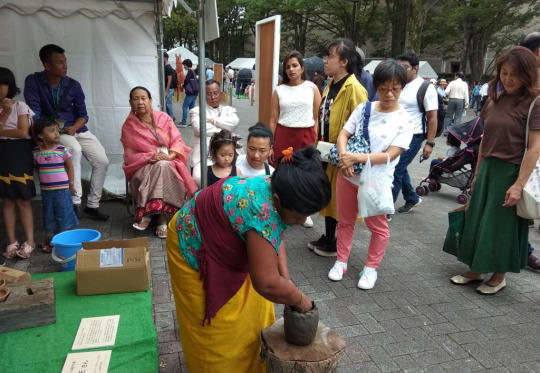
Mrs. Laishram Pramo Devi at work during Namaste India festival, Tokyo, 2019
Though I have not mentioned every one’s name, each one has done a splendid job and contribution made by every single person matters and is the sole reason for the very success of the tour. Nonetheless, my sincere appreciation goes to Mr. Somorjit Laiphrakpam for his wholehearted dedication to work in relations to costume preparation for the performers apart from taking part as an artist.

Mr. Laiphrakpam Somorjit while making headwear for the character Krsna ji of Raas Leela dance
I would like to thank my friends Sachi and her husband Tomohisa san, Mrs. Chiellilynn Ogawa, Aparna Ganesh and her family, Mohit Buddhiraja and his wife Yuki Chan, Mrs. Kazuko Takahashi and UMEX friends including Mrs. Fusako Bandai, Rajkumar Bobo Luwangcha, Reina Saito Chan and her family and Ichiro Takahashi San for taking out their time to visit us at performance sites.
With the leadership of Mr. Aribam Shivadas Sharma, Director, Art & Culture Department, and under the strict guidance and well thought out choreography of guru G. Loken Sharma, the Cultural tour of Japan 2019 closed its first edition with a grand success on 10th October. The students did rigorous trainings and rehearsals under Guru Loken for many weeks and in fact months before the actual performance. I personally visited dance college quite often to see the rehearsals. Further, as a part of coordination, I took interaction session with the troupe members on manners and culture of Japan as a preparation before our departure for the beautiful country.
Finally, we left Japan from Chubu Centrair International Airport, Nagoya on 11th October, at 11 am having a narrow escape from the fiery Hagibis typhoon that hit Central Japan on 13th October. We sincerely pray for Japan and express our solidarity at such difficult time. Ganbaro Nippon!!
The tour seems to end. However the fact is that it opens up a new chapter for further cultural exchange programmes between Japan and Manipur in future. The Japanese cultural troupe is eagerly awaited for the upcoming Sangai festival of Manipur in November 2019. And hence the journey begins.
1 note
·
View note
Text
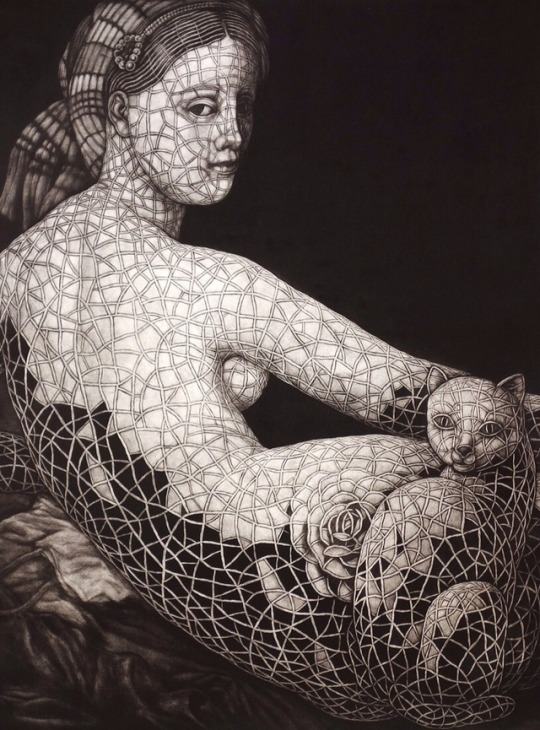
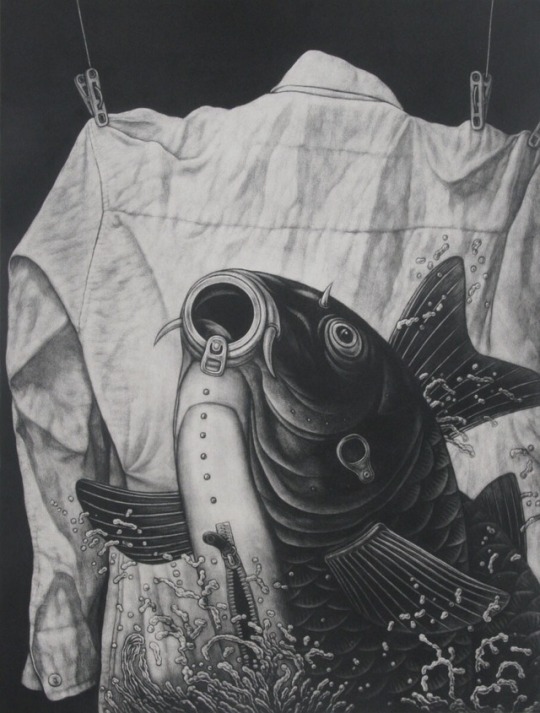
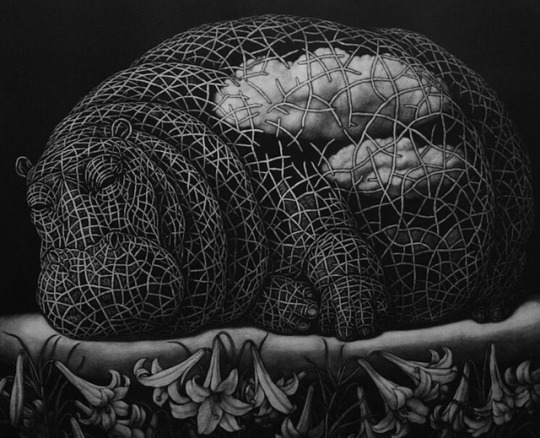
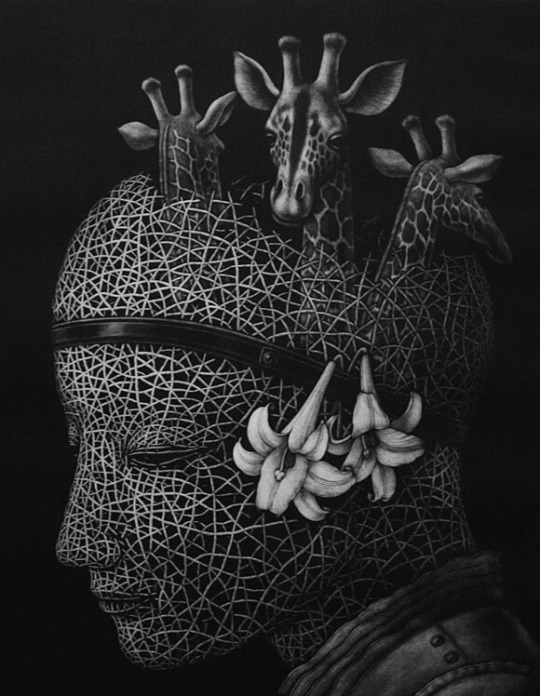
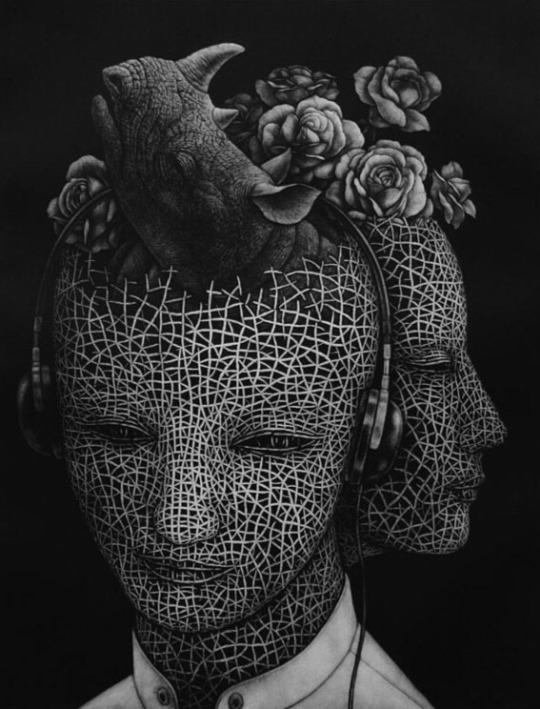
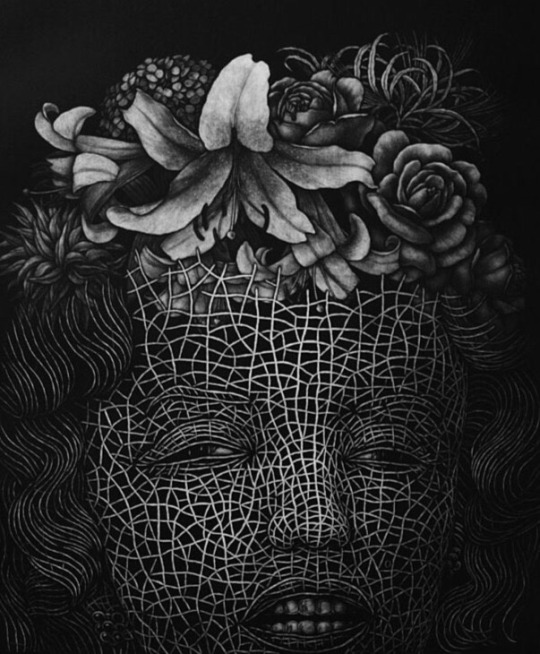
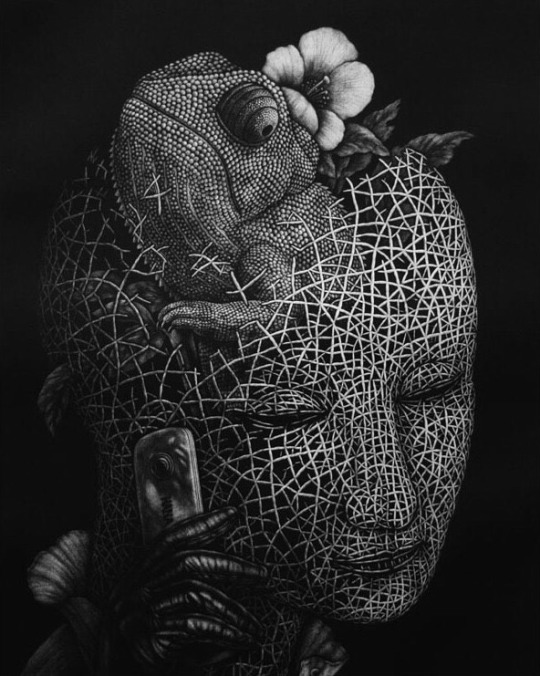
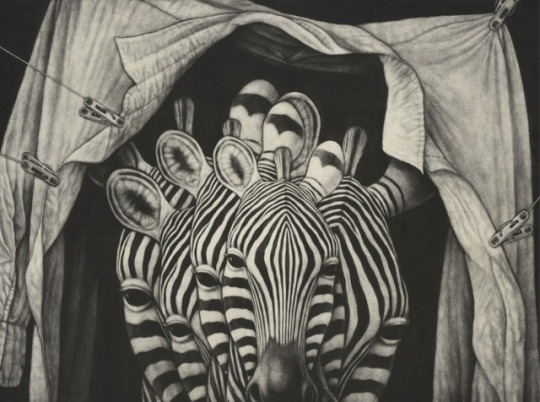
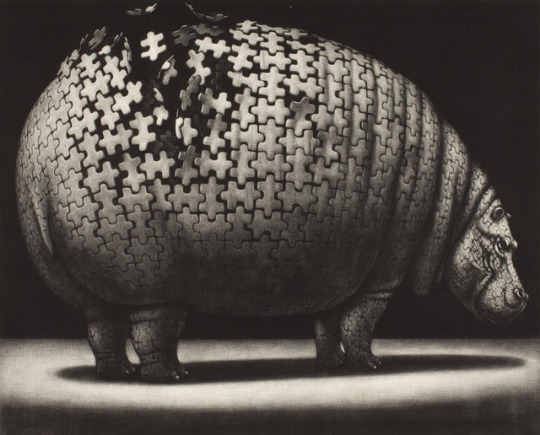
Atsuo Sakazume
Sakazume's mezzo tints and etchings, of animals, are sometimes hard to believe. The workmanship is superb, and the subject matter, really makes us stop and think -- coming together or breaking apart?
Born November 8, 1941 in Gumna Prefecture, Japan and now resides in Kyoto, Japan. Sakazume attended Kyoto University and is very involved with the Japan Print Association. His work can be found in the collections at the following Museums: British Museum, Iwaki City Museum, Osaka Contemporary Art Center,Tochigi Prefectural Museum of Fine Arts, Kyoto Museum. He has appeared in many print exhibitions in Tokyo, Finland, and Kyoto.
Text source
28 notes
·
View notes